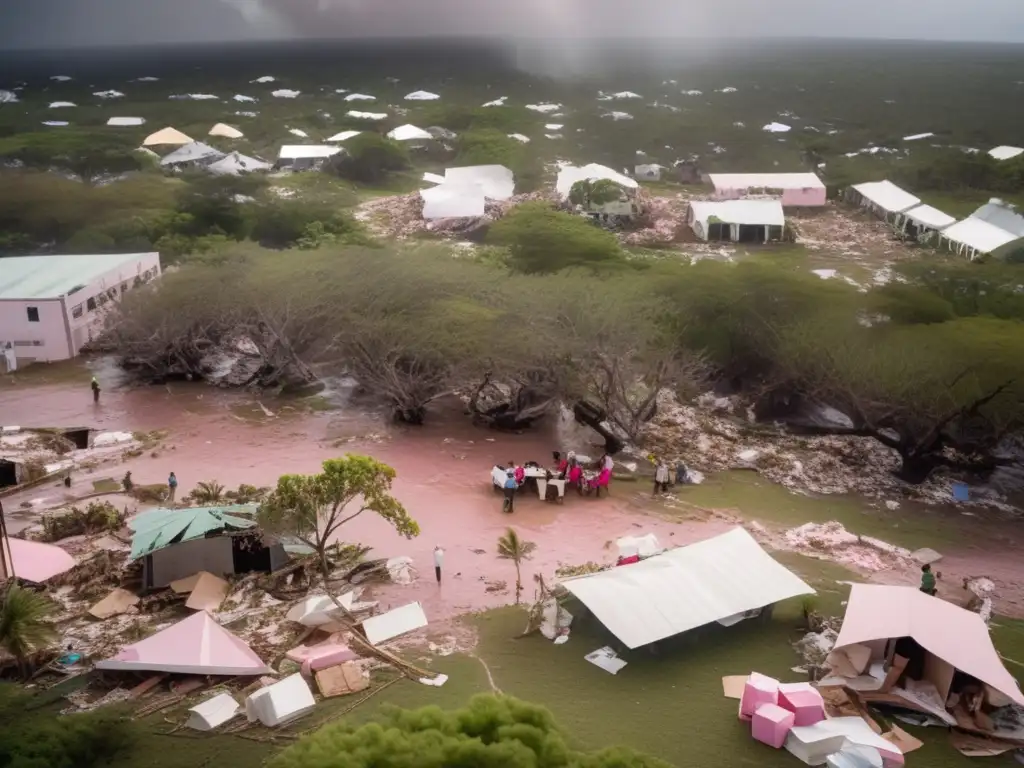Disaster Food Stamps: Nutritional Assistance Post-Hurricane

Disaster Food Stamps: Nutritional Assistance Post-Hurricane
Introduction
After the devastation brought about by hurricanes, individuals and families are left with many challenges to overcome. One of these challenges is ensuring that they have access to adequate nutrition. The Disaster Supplemental Nutrition Assistance Program (D-SNAP), commonly referred to as "disaster food stamps," is a program offered by the United States Department of Agriculture (USDA) that provides temporary food assistance to eligible individuals and households affected by disasters such as hurricanes. This article will provide an in-depth guide on the disaster food stamp program and how it can benefit those impacted by hurricanes.
Eligibility Criteria for Disaster Food Stamps

Household Income Requirements
The first requirement for eligibility for the Disaster Supplemental Nutrition Assistance Program is meeting the income guidelines set by the USDA. This criterion considers a household's net income, which is determined after taxes and allowable deductions have been made. The maximum net income allowed varies by state but typically falls between 130% and 200% of the federal poverty level (FPL). To verify eligibility, applicants must provide documented proof of their income.
Disaster Impact
Applicants must also be able to prove that they were affected by the disaster in question. They must demonstrate that the hurricane caused damage or resulted in a loss of income that has affected their ability to obtain food. Documentation of the disaster's impact on the applicant's life, including property damage, job loss, or other hardships, will be necessary.
Citizenship and Residency Status
Only U.S. citizens, certain non-citizens, and qualified aliens who live or work in the disaster area may qualify for D-SNAP. Eligible non-citizens must provide proof of their immigration status, such as a green card, and meet other eligibility criteria.
Application Process for Disaster Food Stamps

Pre-registration
In anticipation of a hurricane or other disaster, states may allow affected individuals to pre-register for disaster food stamps. This process is intended to expedite the application process and reduce wait times once sites are opened. Applicants who have pre-registered may still be required to complete the full application process at a disaster site.
On-site Registration
After a disaster, states set up disaster food stamp sites to process applications. These sites are typically located in areas that have been significantly impacted by the disaster. Once an applicant has arrived at a site, they will need to provide documentation verifying their eligibility. This includes personal identification, proof of income, residential address, and any documentation of disaster-related losses. After verification, applicants receive an Electronic Benefit Transfer (EBT) card, which they can use at approved food retailers.
Benefits of Disaster Food Stamps

Quick Access to Nutritional Assistance
The Disaster Supplemental Nutrition Assistance Program provides a readily available source of nutrition assistance to those affected by hurricanes. The program's expedited application process ensures that eligible individuals receive benefits promptly, enabling them to purchase food while they rebuild their lives.
Improved Health Outcomes
Access to adequate nutrition is crucial for both short-term survival and long-term health outcomes. A lack of food access can lead to malnutrition, which can cause chronic illnesses such as heart disease, diabetes, and obesity. By providing temporary nutritional assistance, the D-SNAP program can help improve the health outcomes of those affected by hurricanes.
Economic Stimulus
The Disaster Supplemental Nutrition Assistance Program can also serve as an economic stimulus to disaster-affected areas. The benefits provided by the program can help support local grocery stores and food retailers, which may have experienced damage or lost business due to the hurricane. This can help these businesses stay afloat during the rebuilding process and prevent further economic decline in affected communities.
Frequently Asked Questions

-
How long does it take to receive benefits from D-SNAP?
Once an applicant has been approved for the program, they typically receive their EBT card within 7-10 days. However, many states provide emergency benefits within 3 days of approval to ensure immediate assistance.
-
Can I use my D-SNAP benefits to purchase non-food items?
No. D-SNAP benefits can only be used to purchase food items at approved retailers. Alcohol and tobacco products cannot be purchased with D-SNAP benefits either.
-
How often are D-SNAP benefits provided?
The Disaster Supplemental Nutrition Assistance Program is a one-time benefit that is intended to assist households with meeting their nutritional needs for up to one month.
-
What happens if I am already receiving regular SNAP benefits?
Individuals who are already receiving regular Supplemental Nutrition Assistance Program (SNAP) benefits will not be eligible for D-SNAP benefits.
-
Can I apply for D-SNAP if I already applied for other forms of disaster assistance, such as FEMA?
Yes. Applying for disaster food stamps does not disqualify an individual from receiving other types of disaster assistance, including federal emergency management agency (FEMA) benefits.
Conclusion
In times of disaster such as hurricanes, the Disaster Supplemental Nutrition Assistance Program can provide a lifeline to those affected by providing temporary nutritional assistance. Disaster food stamps help ensure that eligible individuals and families have access to adequate nutrition while they rebuild their lives. The program's ability to quickly process applications and provide benefits can support local food retailers and economic recovery in affected areas. It is important to note that applying for disaster food stamps is just one of many ways that those impacted by hurricanes can receive assistance.
It is essential to recognize that hurricanes are a significant threat to public safety, and adequate preparation and knowledge are critical. HurricaneInsider.org provides comprehensive information on hurricanes, addressing a range of topics such as safety tips during hurricanes, understanding hurricane categories, and post-hurricane recovery. Staying informed is critical to keeping yourself and your loved ones safe during hurricane season.
Additional Resources

- USDA Disaster Supplemental Nutrition Assistance Program
- Hurricane Recovery - U.S. Department of Health & Human Services
- Federal Emergency Management Agency
 Temporary Housing Solutions After A Hurricane
Temporary Housing Solutions After A Hurricane Business Continuity: Getting Back To Work Post-Hurricane
Business Continuity: Getting Back To Work Post-Hurricane Safeguarding Cultural And Community Identity After A Hurricane
Safeguarding Cultural And Community Identity After A HurricaneIf you want to discover more articles similar to Disaster Food Stamps: Nutritional Assistance Post-Hurricane, you can visit the Hurricane recovery: category.
Leave a Reply

Articulos relacionados: